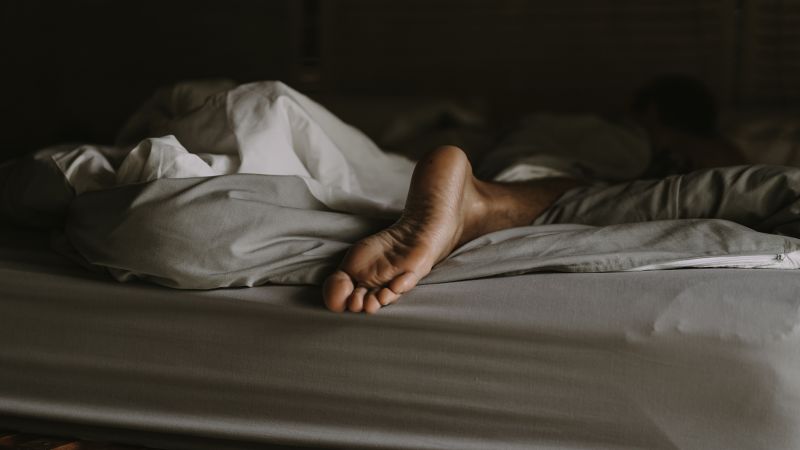Sexsomnia: An embarrassing sleep disorder no one wants to talk about | CNN

🌈 Abstract
The article discusses the sleep disorder known as sexsomnia, which is a type of parasomnia where individuals engage in sexual behaviors while asleep. It covers the clinical documentation of cases, the underlying mechanisms, potential triggers, and various treatment approaches including medication and behavioral techniques.
🙋 Q&A
[01] Overview of Sexsomnia
1. What is sexsomnia and how is it classified?
- Sexsomnia is a sleep disorder where individuals engage in sexual behaviors while asleep, and it is part of a family of sleep disorders called parasomnias that include sleepwalking, sleep talking, sleep eating, and sleep terrors.
- These disorders occur during the deepest stage of sleep, known as delta sleep, when the brain is not in a dream state.
2. How common is sexsomnia?
- A 2010 study found that about 7% of randomly selected adults in Norway had experienced sexsomnia at least once in their lives, and nearly 3% were currently living with the condition.
3. What are some examples of sexsomnia behaviors?
- The article provides several case examples, including a man repeatedly trying to force his wife to have sex at night, a woman tearing off her clothing and masturbating, and a man masturbating while asleep and injuring his groin.
4. How do people with sexsomnia typically react when made aware of their behaviors?
- People with sexsomnia often have total amnesia of their behaviors and are embarrassed, full of shame, and miserable when their bed partners or family members inform them of what happened.
[02] Causes and Triggers of Sexsomnia
1. What are the potential causes and triggers of sexsomnia?
- There is a genetic component, as people with first-degree relatives who have parasomnias are more likely to develop them.
- Obstructive sleep apnea (OSA) may also be a trigger, as the breath holding or apnea can trigger the arousal and sexual behaviors.
- High-stress jobs and lack of quality sleep can also contribute to sexsomnia episodes.
2. How do treatments for underlying conditions affect sexsomnia?
- Treating obstructive sleep apnea can control the secondary sexsomnia.
- Quitting a high-stress job and getting 6-7 hours of solid sleep helped resolve sexsomnia in one case.
[03] Treatment Approaches for Sexsomnia
1. What are the different treatment options for sexsomnia?
- Medication such as clonazepam can successfully control unwanted sexsomnia for many, but not all, patients.
- Behavioral treatments are also available, including:
- Education about sleep stages and how sexsomnia differs from nightmares
- Improving sleep hygiene (reducing caffeine/alcohol, consistent sleep schedule, etc.)
- Relaxation techniques
- Clinical hypnosis to induce a trance-like state and provide suggestions for peaceful sleep
2. How effective are the behavioral treatments?
- Behavioral treatments can dramatically reduce or possibly eliminate symptoms for some people, while others may only see partial improvement or no improvement, in which case medication may be necessary.